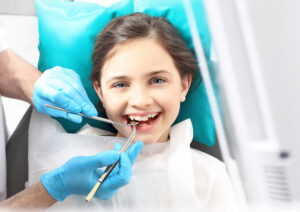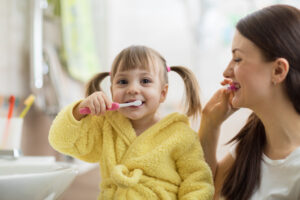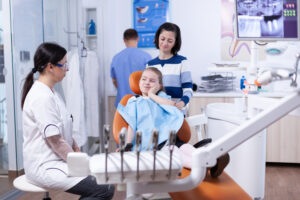Teaching children to take care of their teeth from a young age is one of the best gifts you can offer. Forming proper habits early lays the foundation for lifelong oral health and helps avoid more complicated issues later. In Pediatric Dentistry, these habits are considered essential, because they nurture healthy teeth and gums while boosting a child’s overall well-being. Below, you’ll find practical tips and techniques to make daily routines fun and effective for kids of all ages.
Why Start Early
Children are quick learners, and starting an oral care routine at an early age makes it easier for them to adapt. Good habits formed now will continue into adulthood, reducing the risk of cavities and gum problems. When parents model proper techniques and stay consistent, children naturally follow suit.
Building a Routine
Morning and Night
Brushing at least twice a day once after breakfast and once before bedtime—removes plaque and bacteria accumulated overnight or throughout the day. This regular schedule helps children anticipate “tooth time” as part of their daily routine, making them less likely to resist.
Supervision and Assistance
Young children often need supervision to brush effectively. Around ages six or seven, most kids gain the dexterity to brush independently. Until then, demonstrate the correct technique and gently guide their hand or brush alongside them. This shared activity strengthens their skills and ensures every tooth surface is cleaned.
Helpful Tip: Use a soft-bristled toothbrush sized for small mouths. Replace it every three months or sooner if bristles start to fray.
Teaching Proper Brushing Technique
- Use a Pea-Sized Amount of Toothpaste
For children aged three and up, a pea-sized dab of fluoride toothpaste is enough. Younger kids can use a rice-grain amount or just a smear. - Angle the Brush at 45 Degrees
Encourage your child to angle the toothbrush toward the gum line, using gentle, circular strokes. This helps remove plaque without damaging the gums. - Brush All Surfaces
Clean the outer, inner, and chewing surfaces of the teeth. Spend at least two minutes brushing to ensure thorough coverage. - Spit, Don’t Rinse
After brushing, have your child spit out the excess toothpaste but avoid rinsing with water. This allows the fluoride to remain on teeth longer, offering extra protection.

Introducing Flossing
Flossing reaches areas between teeth where a toothbrush can’t clean. Most children can learn to floss once they have two teeth that touch.
- Demonstrate Gently
Show kids how to wrap the floss around their middle fingers, using a gentle sawing motion between teeth. Emphasize not to snap the floss against the gums. - Use Kid-Friendly Tools
Pre-threaded flossers or floss picks designed for children can simplify the process. Make it a positive experience by allowing them to pick fun colors or designs. - Create a Habit
Flossing every evening before bed helps dislodge food particles that brushing might miss. Consistency boosts effectiveness, just like with brushing.
Creating a Positive Experience
Games and Rewards
Turn brushing and flossing into a mini-game. Challenge children to hum a favorite tune for two minutes or follow a timer that lights up. Offering a sticker or small reward for consistent effort can build motivation without relying on sugary treats.
Family Participation
Brushing together as a family sets a strong example. Children enjoy mimicking adults, and group routines can make the process feel less like a chore. Sharing a nightly “tooth time” ritual underscores its importance and strengthens family bonds.
Gentle Reminders
Children may sometimes forget or resist, especially if they’re tired. Gentle, patient reminders work better than scolding. Positive reinforcement builds a healthy relationship with oral care, ensuring they don’t associate brushing or flossing with stress.
Additional Tips for Good Hygiene
- Choose the Right Toothpaste
Use a fluoride toothpaste recommended for children. Too much fluoride can be harmful, so supervise to ensure they spit out excess and don’t swallow it. - Mindful Snacking
Sugary snacks and drinks can quickly fuel bacteria that lead to decay. Encourage healthier options like crunchy vegetables or cheese, which can help clean teeth and neutralize acids in the mouth. - Stay Hydrated
Drinking water throughout the day rinses away food particles and helps maintain saliva flow. Saliva is crucial for preventing bacteria buildup. - Regular Dental Visits
Routine check-ups reinforce hygiene practices. Dentists can spot early signs of tooth decay, gum inflammation, or alignment issues before they worsen.
Addressing Special Circumstances
- Teething Pain: Sore gums can make brushing uncomfortable. Use a soft brush or clean cloth to gently clean the area. Offer a chilled teething ring for relief.
- Orthodontic Appliances: Children with braces or other devices need extra care to clean around wires and brackets. Specialized brushes and flossing tools help keep everything plaque-free.
- Fear or Anxiety: A calm approach goes a long way. Explain each step in simple terms. Sometimes letting a child hold the toothbrush during a check-up eases their nerves.
Final Thoughts
In Pediatric Dentistry, these habits are considered essential, because they nurture healthy teeth and gums while boosting a child’s overall well-being. Establishing good oral hygiene habits in kids sets them on a path to lifelong dental health. By combining consistent routines, gentle reminders, and positive reinforcement, parents can foster a strong sense of responsibility in their children. This foundation of daily care, aligned with regular check-ups and mindful dietary choices, keeps young smiles bright and confident.


